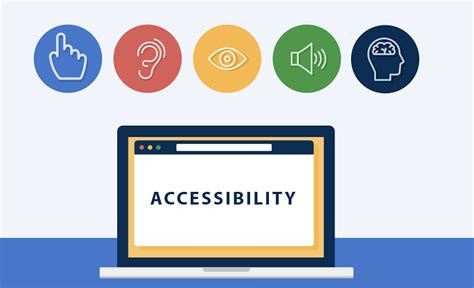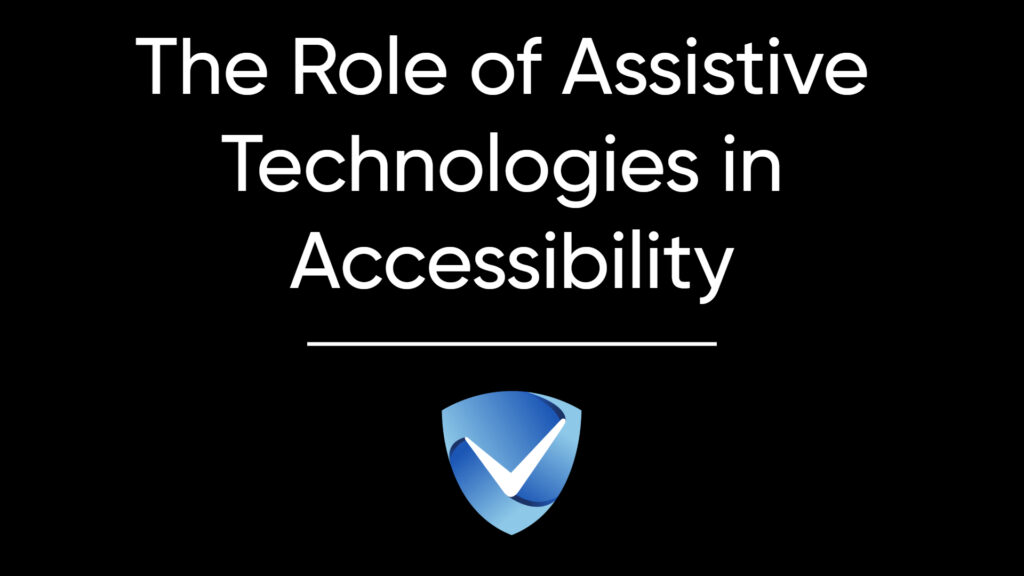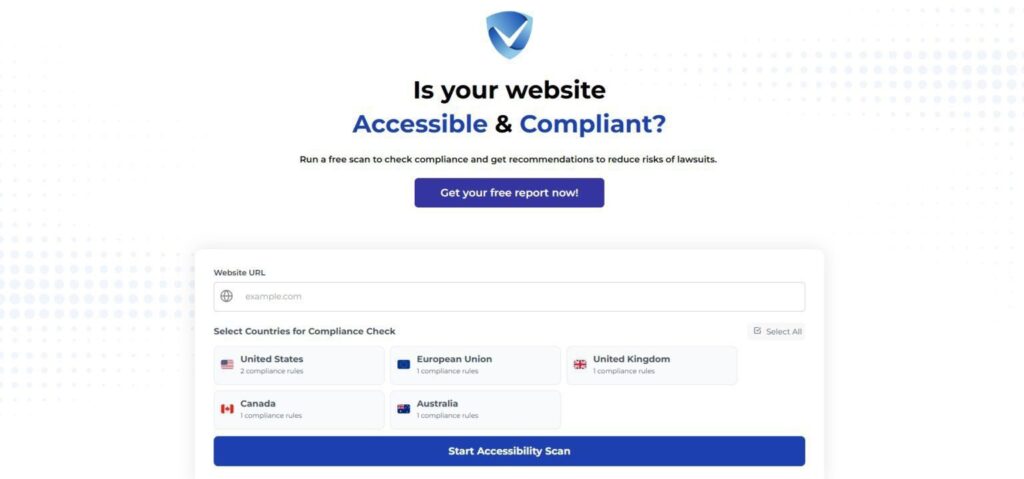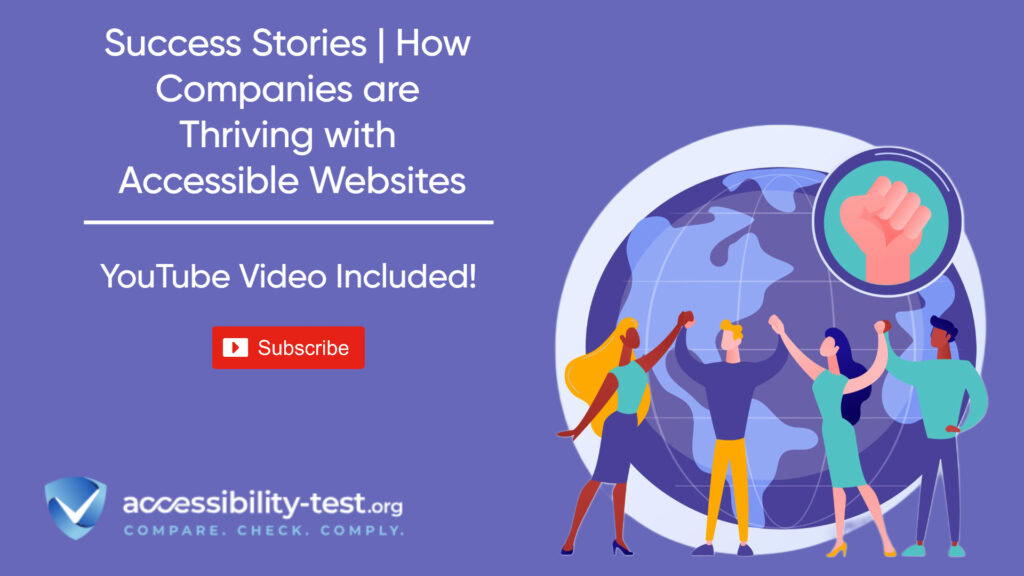What Is Web Accessibility?
Web accessibility refers to the practice of designing and developing websites that can be easily used by individuals with disabilities. This includes people who may have visual, auditory, cognitive, or motor impairments. Accessibility is not merely a compliance issue but rather a critical element that enhances the user experience for all individuals. By addressing web accessibility, companies can ensure that their online presence is inclusive, thereby attracting a broader audience.
In recent years, various laws and regulations have highlighted the necessity of accessible websites. For instance, the Americans with Disabilities Act (ADA) in the United States mandates that digital spaces, like their physical counterparts, are accessible to all. Failing to comply with such regulations can result in legal repercussions, which underscores the importance of integrating accessibility into web development practices. However, the implications of accessibility go beyond just legal compliance.
Accessible websites provide a seamless user experience, fostering an environment where users can easily navigate content without barriers. This enhances user satisfaction, encouraging longer site visits and potentially increasing conversion rates for businesses. Additionally, when companies invest in web accessibility, they broaden their market reach. By catering to individuals with disabilities, businesses can tap into a substantial demographic that might otherwise be excluded from their offerings.
As organizations across various industries recognize the multifaceted benefits of accessible websites, it becomes evident that investing in web accessibility is both a moral and strategic imperative. In the following sections, we will explore specific success stories and the practical steps these companies have taken to create accessible digital spaces, demonstrating the positive impact of web accessibility on their growth and success, ensuring a more inclusive digital experience for all.

Understanding the Business Case for Accessibility
Accessibility is not just a legal requirement but also a crucial factor in driving business growth and innovation. Numerous studies have shown that companies with accessible websites tend to experience significant advantages in customer satisfaction, market share, and employee productivity. A report by the Web Accessibility Initiative indicates that nearly 15% of the global population lives with some form of disability, highlighting a vast market that remains largely untapped due to inaccessible online experiences.
Implementing accessible web design can lead to a better user experience for all customers, including those with disabilities. A study from Forrester Research found that companies with accessible websites witness an increase in conversion rates as high as 200%. This statistic illustrates the potential revenue opportunities associated with inclusivity. Furthermore, businesses that prioritize accessibility often gain positive public relations and enhanced brand loyalty, as consumers increasingly prefer to support companies demonstrating a commitment to social responsibility and inclusion.
Increased employee productivity is another compelling reason to invest in accessible digital environments. Organizations that focus on creating accessible workplaces often report improved satisfaction among their staff, as employees can engage more fully without facing barriers. According to a University of Kansas study, accessible websites can lead to a reduction in training time and enhance overall productivity levels in the workplace, ensuring that all team members can contribute effectively.
Moreover, with the rapid expansion of digital platforms and e-commerce, accessibility serves as a strategic advantage that can differentiate businesses in competitive markets. Companies that invest in accessible website design not only comply with regulations but also position themselves to capture greater market share by appealing to a diverse audience. Emphasizing accessibility enables brands to innovate continually, ensuring longevity and relevance in today’s digital landscape.
Case Study 1 | A Retail Giant’s Journey to Accessibility
In recent years, one prominent retail company recognized the critical importance of creating an accessible website to serve its diverse customer base better. This commitment was driven by increasing regulatory scrutiny and a growing awareness of the need for inclusivity in digital spaces. Initially, the company faced several challenges in achieving web accessibility, including navigating complex regulations and addressing the existing website’s outdated design, which was not compliant with the Web Content Accessibility Guidelines (WCAG).
To embark on this transformative journey, the retail giant initiated a comprehensive accessibility audit that identified key areas of improvement. Working with accessibility experts, the company developed a strategic plan to enhance the website’s usability for individuals with disabilities. Solutions included redesigning the site layout to ensure better navigation, utilizing alt text for images, implementing keyboard navigation features, and enhancing color contrasts for readability. These changes were thoroughly tested with users who have varying disabilities, ensuring that their feedback was integral to the redesign process.
The implementation phase was challenging but rewarding. It involved cross-departmental collaboration, bringing together IT, design, marketing, and legal teams to align their objectives toward creating an accessible online experience. Over time, measurable outcomes began to emerge. Following the website upgrade, the company reported a significant increase in customer engagement metrics, including longer visit durations and lower bounce rates. Furthermore, sales growth was notable, particularly from previously underserved customer segments, reflecting a newfound ability to cater to a wider audience.
This case study serves as a powerful example of how a company’s commitment to accessibility can yield significant benefits. Other organizations can draw valuable lessons from this retail giant’s experience, demonstrating that investing in web accessibility not only fulfills legal requirements but also enhances customer loyalty and drives sales growth.

Case Study 2 | A Financial Institution’s Commitment to Inclusivity
In an increasingly digital world, a prominent financial institution recognized the critical importance of web accessibility to serve a diverse clientele effectively. With a mission to uphold inclusivity, the institution embarked on a comprehensive initiative aimed at transforming its online services to cater to users with varying abilities. This strategic approach not only aimed to enhance the website’s functionality but also sought to improve the overall customer experience.
One of the first steps in their accessibility journey was to conduct an extensive audit of their existing website. This involved assessing the site against established web accessibility standards, such as the Web Content Accessibility Guidelines (WCAG). The findings revealed several areas for improvement, including navigation challenges for visually impaired users and poor mobile device compatibility. Armed with this information, the financial institution established a dedicated team tasked with addressing these issues through modern technology upgrades and UX design improvements.
Staff training was another cornerstone of the institution’s strategy. Employees across various departments participated in workshops focusing on accessibility best practices, which emphasized the importance of designing user-centric solutions. This training ensured that the workforce was not only aware of the legal implications related to accessibility but also committed to fostering a culturally inclusive environment. As a direct result of these efforts, the institution reported significant improvements in customer trust and satisfaction.
Moreover, the enhancement of their online services led to increased retention rates as clients appreciated the dedication to inclusivity. By actively engaging with users for feedback, the financial institution was able to continuously refine its offerings, demonstrating a genuine commitment to meeting the needs of all customers. Their journey illustrates how embracing web accessibility principles can positively influence an organization’s reputation while fostering an environment where every individual has equal access to essential financial services.
Case Study 3 | A Non-Profit Organization’s Impactful Change
In recent years, a notable non-profit organization demonstrated the profound impact of prioritizing accessibility in its digital presence. Recognizing the increasing importance of online engagement, the organization undertook a transformative journey to make its website more accessible for individuals with disabilities. This shift not only enhanced their user experience but also fundamentally shifted how they reached and interacted with their community.
Initially, the organization faced several unique challenges typical of non-profits, including limited financial resources and a small team. With a mission focused on social advocacy, they understood that effectively reaching potential donors and volunteers hinged on their online performance. However, their existing website was not optimized for accessibility, posing barriers to participation for many individuals with disabilities. The solution required a dedicated effort to redesign the site with accessibility principles in mind.
The process involved conducting thorough audits to identify areas needing improvement, such as proper alt text for images, the use of descriptive headings, and ensuring keyboard navigability. Collaborating with accessibility experts, they implemented a series of changes that significantly enhanced the website’s functionality. This commitment to inclusivity not only found favor with current supporters but also attracted new donors and volunteers from diverse backgrounds.
As a result, the non-profit experienced a notable increase in donor contributions and community engagement. The accessibility-driven approach helped them reach a broader audience, facilitating online donations and participation in fundraising events. Furthermore, the organization became a leader in accessibility advocacy within their sector, setting an example for other nonprofits. The empowered digital presence has ultimately underscored the critical role that accessibility plays in successfully bridging the gap between organizations and the communities they serve.

Legal Considerations and Compliance Benefits
In today’s digital age, the significance of web accessibility extends beyond ethical considerations; it embodies legal obligations that many businesses may overlook. Regulatory frameworks like the Americans with Disabilities Act (ADA) serve to enforce accessibility standards that ensure individuals with disabilities can engage with online content effectively. Although the ADA was enacted in 1990, its implications for the digital landscape have evolved, mandating that websites adhere to standards that accommodate a variety of disabilities.
The Web Content Accessibility Guidelines (WCAG) further delineate specific strategies for achieving web accessibility. These guidelines categorize accessibility criteria into four main principles: Perceivable, Operable, Understandable, and Robust (POUR). By conforming to these principles, organizations can provide inclusive online experiences that cater to users with diverse needs. Not only does adherence to these guidelines facilitate compliance with legal standards, but it also fosters a culture of inclusion and respect within the corporate environment.
Proactive compliance with web accessibility legislation can significantly mitigate legal risks. Lawsuits relating to incidents of non-compliance are not uncommon, with organizations facing hefty penalties and reputational damage. By prioritizing accessibility, companies can avoid costly legal challenges while demonstrating a commitment to social responsibility. Moreover, enhancing web accessibility can lead to measurable improvements in brand reputation, as consumers are increasingly drawn to businesses that advocate for equitable access to information and services.
In conclusion, the legal implications surrounding web accessibility underscore the importance of compliance with regulations such as the ADA and WCAG. Organizations that proactively embrace accessible web design not only fulfill their legal obligations but also position themselves as leaders in corporate social responsibility. This not only safeguards against potential legal challenges but also enhances overall brand image in a competitive marketplace.
Innovative Technologies Enhancing Accessibility

The drive towards creating accessible websites has led to significant advancements in technology, fostering an inclusive online environment. Emerging technologies, such as artificial intelligence (AI) and various innovative design tools, are pivotal in this transformation. They play a crucial role in enhancing web accessibility, not only for individuals with disabilities but also for the broader audience, ensuring a richer user experience.
One of the most promising advancements includes AI-powered applications that automate the process of accessibility compliance. These tools utilize algorithms to analyze website content, identify potential barriers, and suggest improvements for better usability. For instance, machine learning techniques can optimize color contrasts and alternative text for images, ensuring that users with visual impairments can interact with the content effectively. This proactive approach diminishes the need for manual audits, making compliance with accessibility standards more efficient, thus promoting an inclusive digital space.
Equally significant are design frameworks that prioritize accessibility from the onset of the development process. Such frameworks provide developers with pre-built components that comply with accessibility guidelines, streamlining the creation of websites that are inherently usable by individuals with diverse needs. For example, tools like WCAG-compliant patterns ensure that developers focus on accessibility at every step, reducing the chances of overlooking critical features that facilitate user engagement.
Moreover, advancements in voice recognition and speech synthesis technologies provide users with alternative interaction methods. By enabling voice commands and auditory feedback, websites become more navigable and user-friendly, especially for those with mobility challenges. Integrating these technologies not only enriches the experience for disabled users but also appeals to a broader audience seeking efficiency and convenience in their online interactions.
By leveraging such innovative solutions, companies are not only meeting compliance requirements but are also enhancing the overall user experience. As businesses embrace these technologies, they pave the way for a more equitable digital world, ultimately driving success across industries.
Best Practices for Implementing Accessibility Features
Creating an accessible website is an essential step for organizations aiming to reach a broader audience and comply with legal standards. Implementing effective accessibility features requires strategic planning and thoughtful execution. One of the foremost best practices is to conduct user testing with diverse populations, including individuals with various disabilities. Engaging this user group actively during the design and development phases allows organizations to receive invaluable feedback on how to enhance their sites. This feedback can reveal potential barriers that may not be obvious to developers and designers who do not experience these challenges firsthand.
Another critical aspect of improving website accessibility is collaboration with accessibility consultants. These professionals possess specialized knowledge and can provide expertise to help organizations understand the nuances of web accessibility regulations, such as the Web Content Accessibility Guidelines (WCAG). By leveraging their experience, companies can ensure that their website meets established standards and fosters an inclusive environment. Consultants can also assist in training internal staff on accessibility best practices, creating a more knowledgeable team committed to maintaining accessibility at all levels of the organization.
In addition to initial implementation and testing, ongoing maintenance strategies are essential to ensure compliance remains a priority. Regular audits of web content, features, and functionality should be conducted to identify any new accessibility issues that may arise. Keeping abreast of changes in legislation, technology, and user expectations is equally important. Organizations should integrate accessibility into their website development lifecycle, ensuring that every update or redesign considers accessibility as a core component. This proactive approach demonstrates a commitment to inclusivity and positions companies as leaders in their industry.

As digital inclusivity gains momentum, it becomes increasingly vital for businesses to prioritize accessibility within their strategic frameworks. Companies that embrace accessibility not only tap into wider markets but also position themselves as leaders in fostering an inclusive environment. In doing so, they not only comply with existing regulations but also demonstrate a commitment to equity and social responsibility, ultimately enhancing their brand image.
Organizations that prioritize accessible websites empower all individuals, including those with disabilities, creating an environment where everyone can participate equally. This inclusivity plays a significant role in customer loyalty; consumers are more likely to support brands that invest in accessibility features. By adopting accessibility as a cornerstone of their digital strategy, businesses can cultivate trust and loyalty among their customer base.
Moreover, the financial implications of accessibility cannot be ignored. Numerous studies illustrate that companies presenting a commitment to accessible practices often experience sustainable growth. They are better equipped to navigate diverse market dynamics, attracting a broader range of clients and improving their overall market reach. Accessibility-focused strategies are not merely initiatives; they lead to increased engagement and long-term profitability.
Looking ahead, businesses must set a benchmark that future generations can strive to achieve. By embedding accessibility into the core of their operations, companies will ensure they remain not only compliant with regulations but also competitive in an ever-evolving marketplace. The stakes are clear: those who disregard accessibility risk alienating potential customers and sacrificing market share. Hence, the future of business hinges on how well organizations can incorporate accessible practices, demonstrating that growth and inclusivity can indeed go hand in hand.



